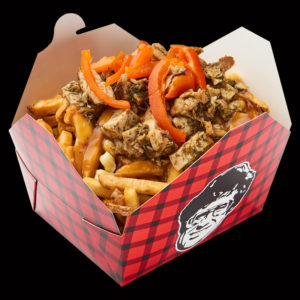by Vishal Lilman
Who got their salty fries in my savoury gravy and cheese curd dish?
This is a question that most likely wasn’t asked before the 1950s, with the exception of a few small “greasy spoon” type restaurants in the Centre-du-Québec area. Love it or hate it, poutine is a staple in Canadian cuisine, along with maple syrup and a cold bottle of Molson.
But what makes a poutine so Canadian?
One would expect a crazy concoction like this to originate from America as opposed to a Canadian kitchen.
Is it the PEI potatoes, and cheese curds from Canadian dairy farmers? Maybe it’s the perfect carb dish for recovery after an intense hockey game? Or perhaps it’s the diversity of the dish?
From its popularization in the late 50s, the once not-so-simple side dish has become even more complex and diverse, with unorthodox toppings and styles to match that of the diversity of our home and native land.
Take a look at the menu of the local Smoke’s Poutinerie for example. Aside from the traditional poutine, one can order a customization to make not only a main dish, but a welcome dish that honours the taste of personal heritage while still keeping a Canadian reputation.
There are your normal “run-of the mill” westernized poutines such as ‘Philly Cheesesteak’, ‘Bacon Cheeseburger’, ‘Pulled Pork’, and the locally named ‘Hogtown Poutine’ (Hogtown is another name for Toronto), while the more international renditions include ‘Mexican Scrambler’, ‘Korean’, ‘Jerk Chicken’, and ‘Butter Chicken’ among others.
Yes, these flavours are actually on the menu! It’s amazing to think how symbolic a dish is for a country. Just like our home, poutine has no right or wrong recipe, as all different ingredients are welcomed and accepted, unapologetically adding fresh taste, texture, and colours that provides a perfect comfort food every time.
































